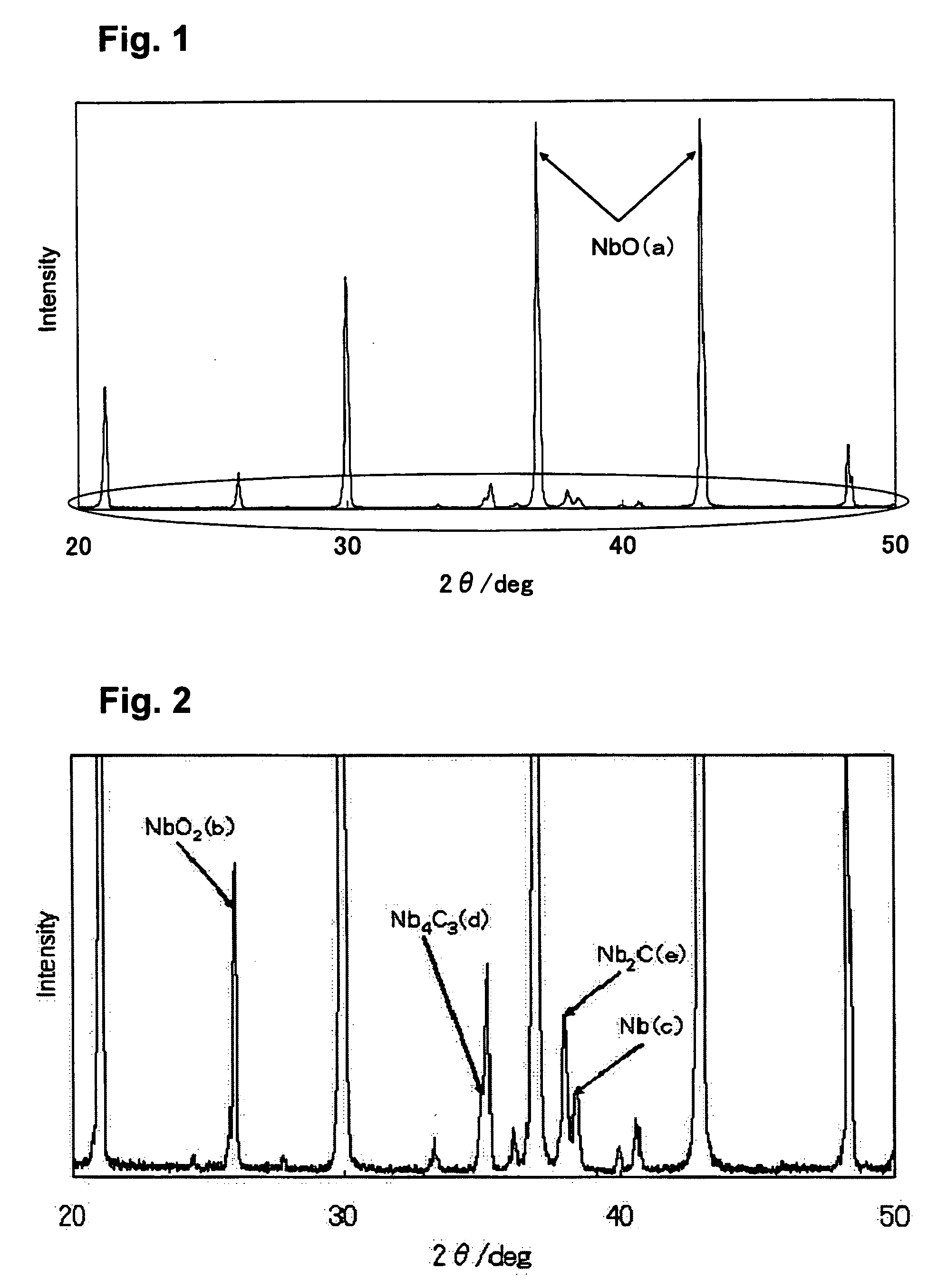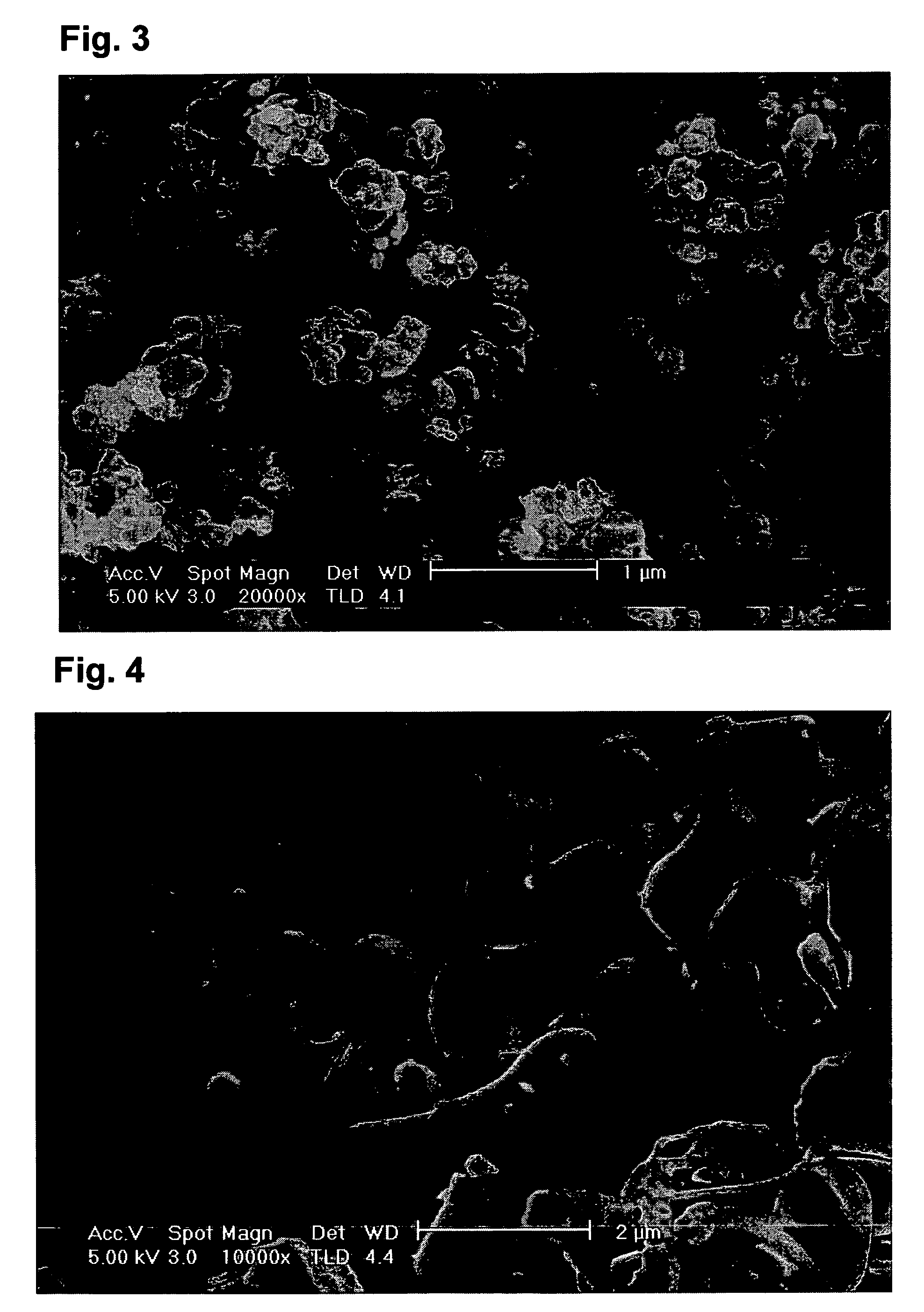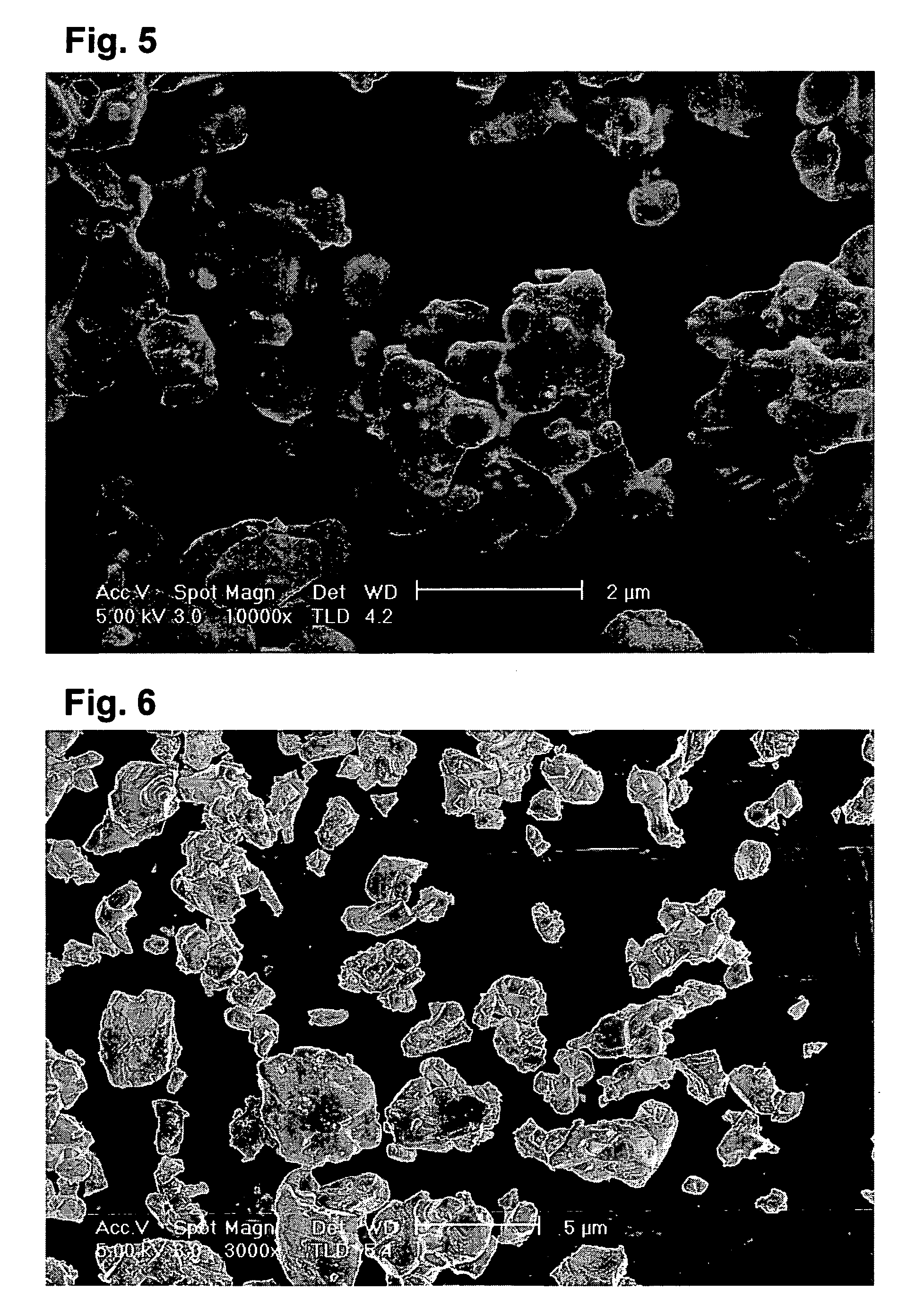Niobium oxide and method for producing the same
a technology of niobium oxide and niobium oxide, which is applied in the field of niobium oxide, can solve the problems of niobium oxides that are difficult to control the reaction and obtain fine particles, and the amount of niobium oxides used as raw materials for electronic components such as frequency filters and capacitors and as targets for sputtering have been steeply increased
- Summary
- Abstract
- Description
- Claims
- Application Information
AI Technical Summary
Benefits of technology
Problems solved by technology
Method used
Image
Examples
example 1
[0043] First Step: Description is made on a case where reduction was carried out by using carbon in the first step in which niobium pentoxide (Nb2O5) is subjected to dry reduction treatment into niobium dioxide (NbO2). As the raw materials, niobium pentoxide and a commercially available carbon (the particle size observed with SEM: 0.1 to 100 μm) were used. In a carbon crucible, 4.78 kg of niobium pentoxide and 0.22 kg of carbon were placed and mixed under stirring. The mixed raw material (5.00 kg) was placed in a carbon vessel disposed in a vacuum heating furnace.
[0044] The temperature inside the vacuum heating furnace was increased at a rate of 20 to 25° C. / min, and a pressure reduction was started at each of the temperatures of 1100° C., 1250° C. and 1400° C., and a reduction treatment was carried at 1400° C. for 30 minutes. The pressure reduction inside the furnace was carried out down to 10 Pa. Thereafter, each sample subjected to pressure reduction starting at the above descri...
example 2
[0052] A Series of Reactions: Description is made on a series of reduction treatments for producing niobium monoxide by reducing niobium pentoxide. Carbon was used both in the first step and the second step, and the obtained product was reduced under a hydrogen atmosphere.
[0053] In the first step, 0.96 kg of niobium pentoxide and 0.04 kg of carbon were dry mixed and placed in a carbon crucible disposed in a vacuum heating furnace. The temperature inside the vacuum heating furnace was increased at a rate of 20° C. / min, and the pressure reduction was started at 1400° C., and a reduction treatment was carried out at 1400° C. for 90 minutes. The pressure reduction inside the furnace was carried out down to 10 Pa. The sample subjected to the reduction treatment was taken out and subjected to X-ray analysis to carry out an identification and a quantitative determination of the constituent substances thereof. Consequently, 0.87 kg of niobium dioxide having a 100% purity was obtained.
[005...
example 3
[0058] Second Step: Description is made on a case where a niobium carbide was used as a reducing agent in the second step reaction in Example 1. The reduction was carried out under the same conditions as in Example 1 except that the reaction time was set at 90 minutes. It is to be noted that the temperature increase rate was set at 20° C. / min and the reduction temperature was set at 1600° C. for each of the pressure reduction starting temperatures. The NbO purities thus obtained are shown in Table 4.
TABLE 4BalancePressure reductionNbO purityNbNbO2Nb2CNb4C3starting temperature(%)(%)(%)(%)(%)14005303188150077120201600922510
[0059] As shown in Table 4, even when a niobium carbide was used as a reducing agent in the reduction reaction of the second step, niobium monoxide was obtained with purities approximately the same as those in the cases (Table 2) where carbon was used. In the balance, remaining niobium carbides (Nb2C, Nb4C3) as well as unreacted NbO2 were identified.
PUM
| Property | Measurement | Unit |
|---|---|---|
| specific surface area | aaaaa | aaaaa |
| particle size | aaaaa | aaaaa |
| pressure | aaaaa | aaaaa |
Abstract
Description
Claims
Application Information
 Login to View More
Login to View More - R&D
- Intellectual Property
- Life Sciences
- Materials
- Tech Scout
- Unparalleled Data Quality
- Higher Quality Content
- 60% Fewer Hallucinations
Browse by: Latest US Patents, China's latest patents, Technical Efficacy Thesaurus, Application Domain, Technology Topic, Popular Technical Reports.
© 2025 PatSnap. All rights reserved.Legal|Privacy policy|Modern Slavery Act Transparency Statement|Sitemap|About US| Contact US: help@patsnap.com



